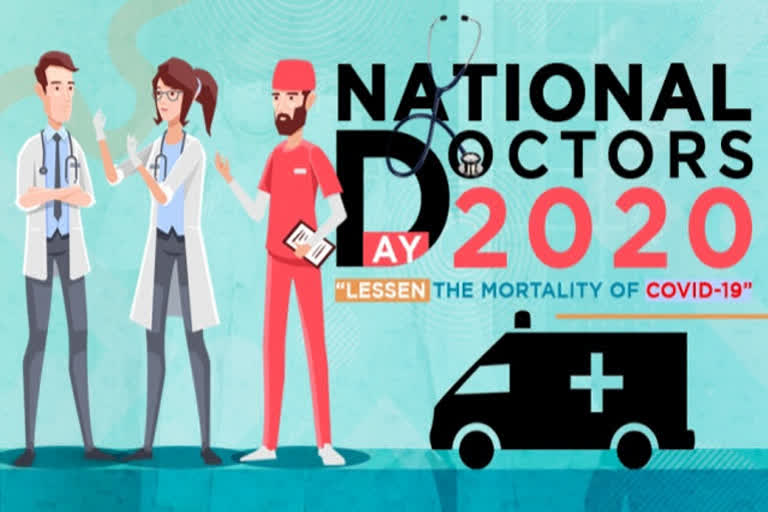Hyderabad: Every year on July 1, India celebrates its National Doctors' day to mark and honour the doctors and physicians for their selfless services. It intends to express gratitude to the medical professionals who serve people round the clock. It is celebrated to honour the birth and death anniversary of Dr Bidhan Chandra Roy who was a physician and also the second Chief Minister of West Bengal. Doctor’s Day was established by the Government of India in 1991 to be recognised and celebrated every year on July 1.
India has grown by leaps and bounds in the medical field, not just to further Dr. B.C. Roy’s work but also with new and innovative techniques. This day serves to show gratitude to all those who have selflessly aided us in our time of need and tirelessly worked for the health of their patients by commemorating the greatest representative of these ideals.
Doctor’s Day is observed on different dates across the world. In the United States, the day is observed on March 30, in Cuba on December 3 and in Iran on August 23.
Dr. Bidhan Chandra Roy
- Dr B.C. Roy was born on July 1, 1882 at Patna, Bihar. Roy was deeply interested in learning medicine and kept trying to submit his application at St Bartholomew's Hospital in England even after being rejected 30 times. He completed his medical graduation from Calcutta and his MRCP and FRCS degrees from London. He began his medical career as a physician in India in 1911. He then joined the Calcutta Medical College as a faculty and later moved to the Campbell Medical School and then to Carmichael Medical College.
- He was a famous physician and renowned educationist as well as a freedom fighter. He joined Mahatma Gandhi during Civil Disobedience Movement. Later he became the leader of Indian National Congress and then Chief Minister of West Bengal.
- He passed away on July 1, 1962, after registering 80 years of his great service for the country. The Medical Council of India instituted Dr. B.C. Roy National Award Fund in 1962 to perpetuate his memory. The Dr B.C.Roy National Award was instituted in the year 1976 to recognize the best talents in encouraging the Development of specialities in different branches in Medicine. Dr Roy was honored with the great Indian civilian award "Bharat Ratna" on February 4, 1961.
State/UT wise Number of Doctors Possessing Recognised Medical Qualifications (Under I.M.C Act) Registered wih state medical Councils/Medical Council of India from the year upto 2010 to 2018 (As on 31st December of the concerned year)
Doctors in India
- In 2017, 1.33 billion of Indian population is being served by 1.8 million registered medical graduates. So, the ratio is 1.34 doctor for 1,000 Indian citizens as of 2017.
- India has reached the norm of WHO of at least 1:1,000 doctor- population ratio.
- Currently, India hosts a total of 479 medical colleges with an annual intake of 67,218 MBBS students. About 12,870 MBBS student positions have been added only in the last 3 years.
- The total number of registered Allopathic Doctors (up to 2018) is 11, 54,686. Number of Dental Surgeons registered with Central/State Dental Councils of India up to 31.12.2018 was 2,54,283.There is an increasing trend in number of Dental Surgeons registered with Central/State Dental Council of India from 2007 to 2018. Total number of registered AYUSH Doctors in India as on 01.01.2018 was 7,99,879. AYUSH has Maximum numbers of Registered Ayurvedic doctors (55.47%), followed by Registered Homeopathy Doctors (36.69%) in India.
- Delhi is better in terms of doctor-population ratio (1:2203), but it is population is still twice the ratio recommended by WHO. The states and UTs that are closest to meeting the WHO standards are Arunachal Pradesh, Puducherry, Manipur and Sikkim.
- As of March 31, 2017, the country had a shortfall of 10,112 female health workers at primary health centres, 11,712 female health assistants, 15,592 male health assistants and more than 6,1000 female health workers and auxiliary nurse midwifes at sub-centres.
- In fact, primary health centres across the country are in want of at least 3,000 doctors with 1,974 such centres operating without a single doctor. In community health centres, there is a shortfall of close to 5,000 surgeons.
- In Bihar, one government doctor serves 28,391 people.
- Uttar Pradesh is ranked second with 19,962 patients per doctor, which is followed by Jharkhand (18,518), Madhya Pradesh (16,996), Chhattisgarh (15,916) and Karnataka (13,556).
